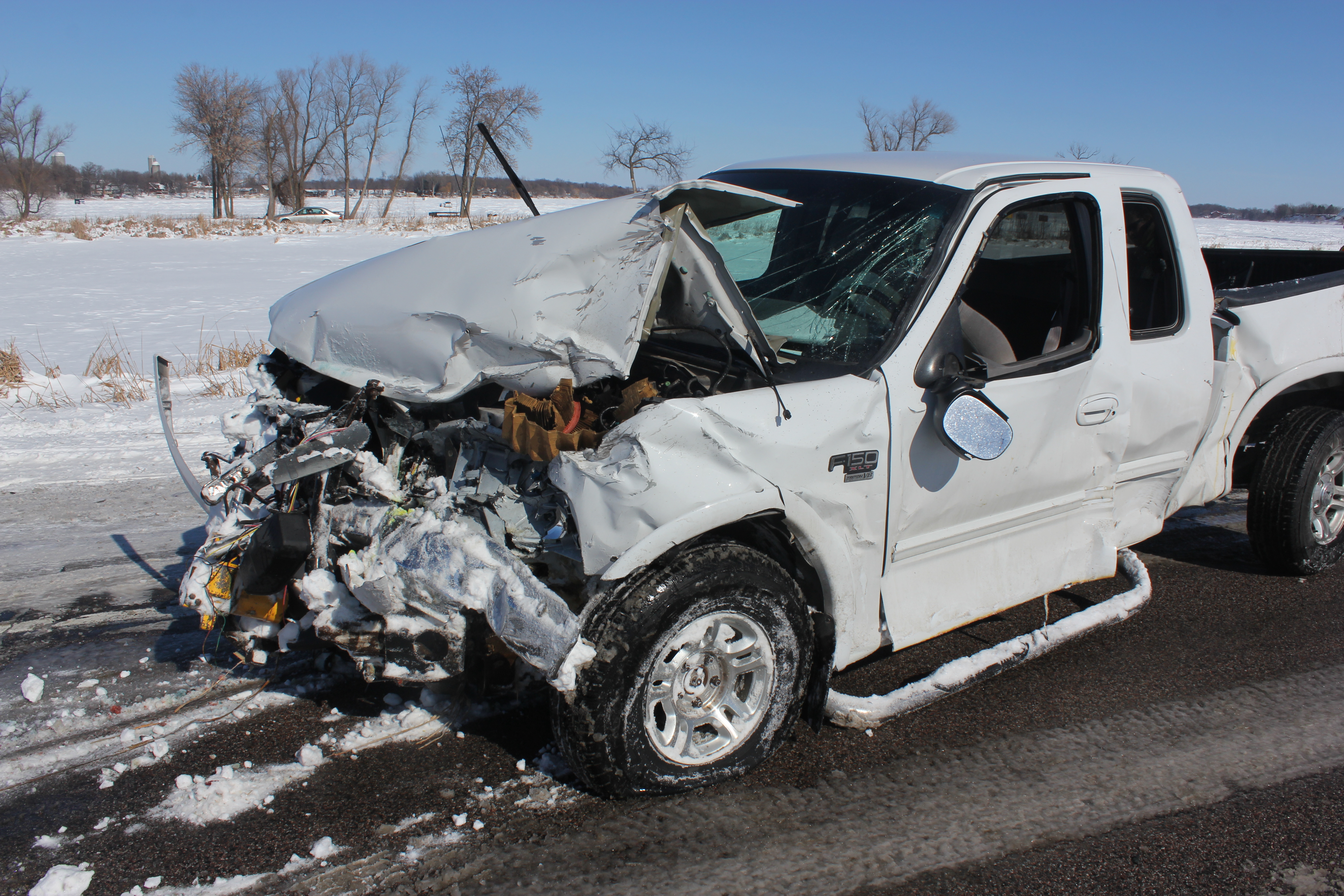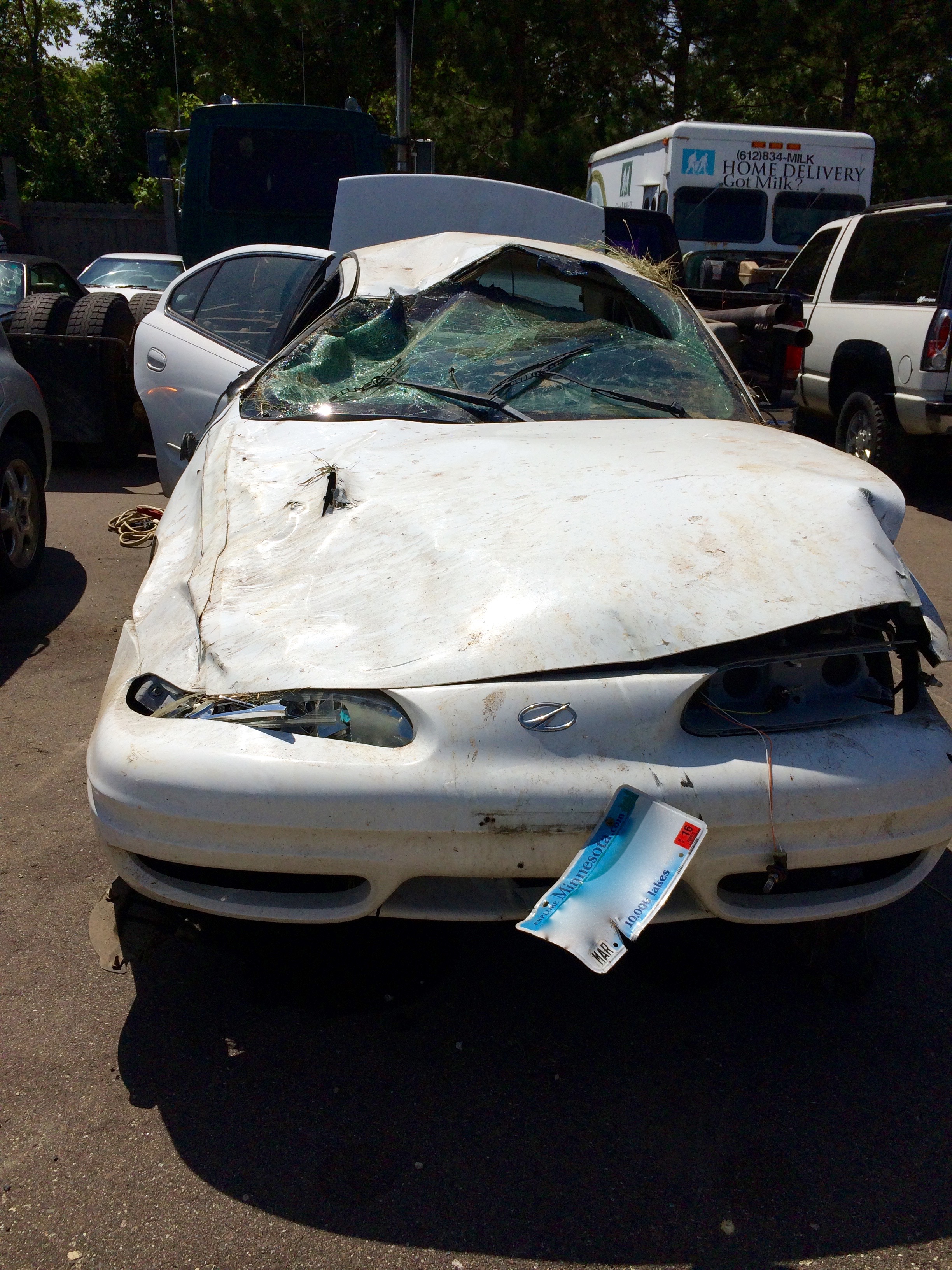A record percentage of front seat occupants in Minnesotan are buckling up — 93.4 percent (2019) — yet about 30 percent of all motorists killed in crashes aren’t belted — translating into an average of 90 deaths and 210 serious injuries each year.
Wearing your seat belt will keep you from:
Crashing into the windshield.
Slamming into and injuring other passengers.
Being ejected from the vehicle.
Stats
Seat belts restrain motorists in the vehicle’s designed protective space, giving them room to live in the event of a crash. Seat belts also keep a motorist correctly positioned behind the wheel to help maintain control of a vehicle.
You will never hear a person saying "I'm glad I didn't wear my seat belt" when they are involved in a crash, but you will find story after story from survivors who credit their seat belts for surviving a crash. Recently, a number of survivors shared their stories.
The Motorists in these vehicles credit their seat belts for surviving the crash




Minnesota’s Primary Seat Belt Law
Minnesota law states that drivers and passengers in all seating positions must be buckled up or seated in the correct child restraint. Officers will stop and ticket unbelted drivers or passengers. Seat belts must be worn correctly — low and snug across the hips, and shoulder straps should never be tucked under an arm or behind the back.
Law enforcement will stop and ticket unbelted drivers or passengers — including those in the back. A seat belt violation can cost more than $100.
Seat belt enforcement of this law begins with the motorist — speak up and insist passengers are buckled up.
Minnesota Child Car Seat Law
In Minnesota, all children must be in a child restraint until they are 4’9” tall, or at least age 8, whichever comes first.
Rear-facing child seats - Newborns to at least 1 year and 20 pounds.
Choosing the Right Seat
Rear-facing seats – The American Academy of Pediatrics recommends that all infants and toddlers should ride in a rear-facing car seat until they have reached the height and weight limits allowed by the car seat manufacturer. It is safest to keep children rear-facing up to the maximum weight limit of the car seat.
Forward-facing seats with harness - Toddlers and preschoolers who have reached the height and weight limits of the rear-facing car seat should use a forward-facing seat with harness until they reach the weight limit of the harness allowed by the car seat manufacturer.
Booster seats - For school-age children who have reached the height and weight limits of the forward-facing seat. The booster must be used with a lap and shoulder belt.
Seat belts - For children over 8 years old or have reached 4 feet 9 inches tall. It is recommended to keep a child in a booster seat based on their size rather than their age. Your child is ready for an adult seat belt when they can sit with their back against the vehicle seat, knees bent comfortably and completely over the vehicle seat edge without slouching, and feet touching the floor.
Seat Belt Use Safety Tips
Always buckle up — and insist passengers are belted, too. In a crash, unbelted motorists can become a projectile, slamming into and injuring or killing others inside a vehicle.
Wear lap belts low and snug across the hips; shoulder straps should never be tucked under an arm or behind the back — not only is this unsafe, it is illegal.
Children under age 13 should always ride in the back seat. Kids under 4-feet 9-inches should be in a booster seat. Learn more about the child passenger safety and the booster seat law.
Pregnant women should wear the lap belt under the stomach, as low on the hips as possible and against the upper thighs. The shoulder belt should rest between the breasts.
Airbags are designed to work with seat belts to keep vehicle occupants in a safe position during a crash — airbags are not effective when the motorist is not belted.
Seat Belt Statistics
In 2019, 73 unbelted motorists died on Minnesota roads.
Lack of seat belt use is a contributing factor in about 30 percent of all motorists killed.
In a crash, odds are four times greater for injury if a motorist is not buckled up.
In 2019, 77 percent of unbelted deaths occurred in Greater Minnesota..
Children are paying with their lives if they are not in proper car seats. From 2015-2019 in Minnesota:
- 17 children (ages 0-7) were killed in motor vehicles and only seven of the victims were known to be properly secured (6 were not properly restrained, and restraint use was unknown in 4 fatalities).
- Of the 87 children (ages 0-7) seriously injured in motor vehicles, only 53 percent of the victims were known to be properly secured.

